Color has always greeted guests before you do, and in 2025 paint makers are answering with a richer palette of statement reds, grounded greens, sultry blacks, and glass-like lacquers. Trend spotters report homeowners embracing expressive color for instant curb appeal while still relying on forgiving neutrals and pastel tints when subtlety suits the architecture. From Feng Shui symbolism to cutting-edge color-drenching, the twenty ideas that follow translate these movements into weekend-friendly projects. Each paragraph highlights one clear benefit and one actionable tip so you can lift a brush with confidence.
1. Fiery Red Welcome Door
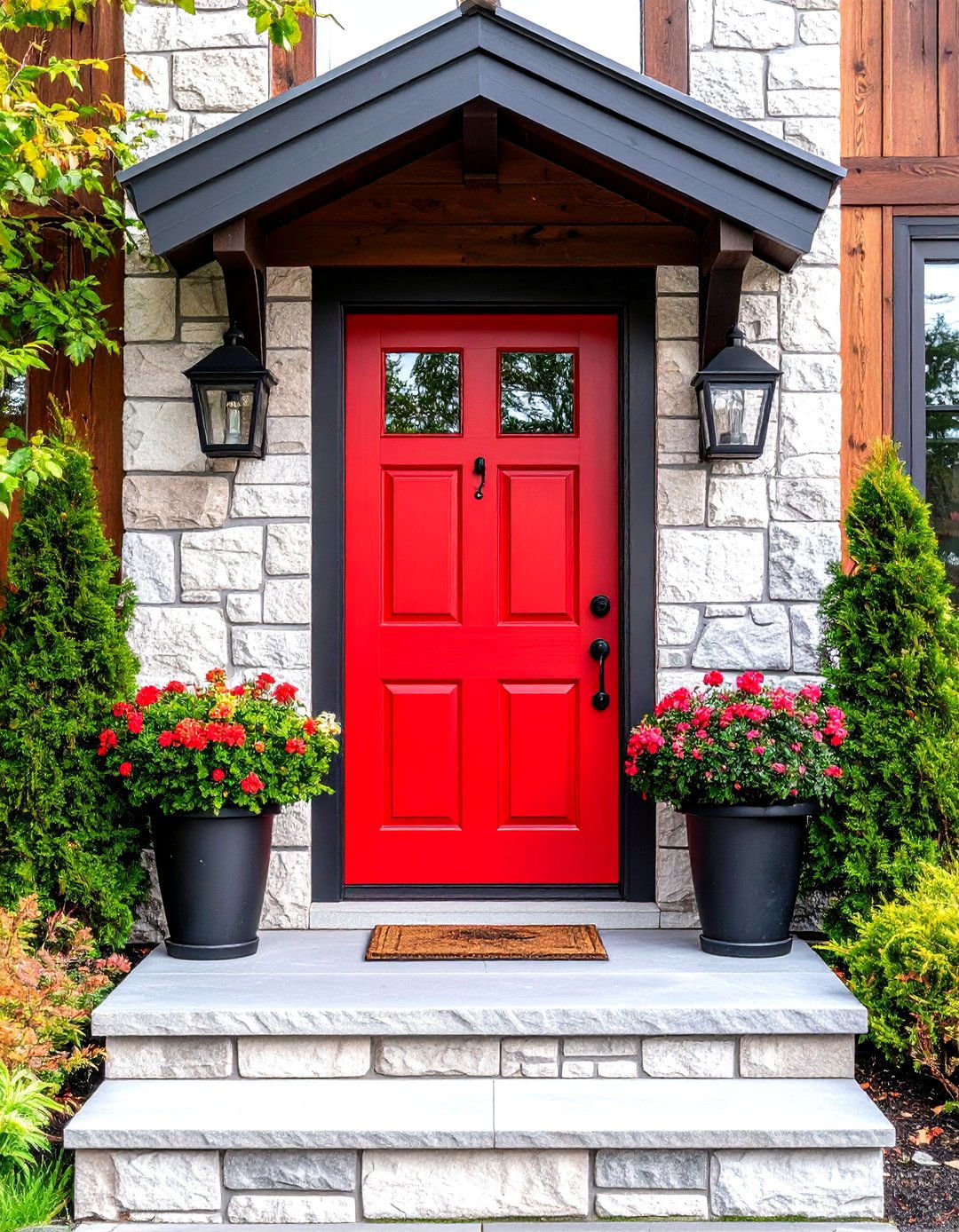
A blazing red door radiates charisma, luck, and visibility. Feng Shui associates the hue with protection and new opportunity, sending energizing “chi” through your threshold. Choose a UV-stable exterior enamel and sand lightly between coats to keep that confident glow from fading. Brick-toned reds flatter masonry and timber alike, while matte-black hardware lets the color sing. Finish by flanking the jamb with potted evergreens so the warm pigment feels anchored rather than brash.
2. Two-Tone Color-Block Door
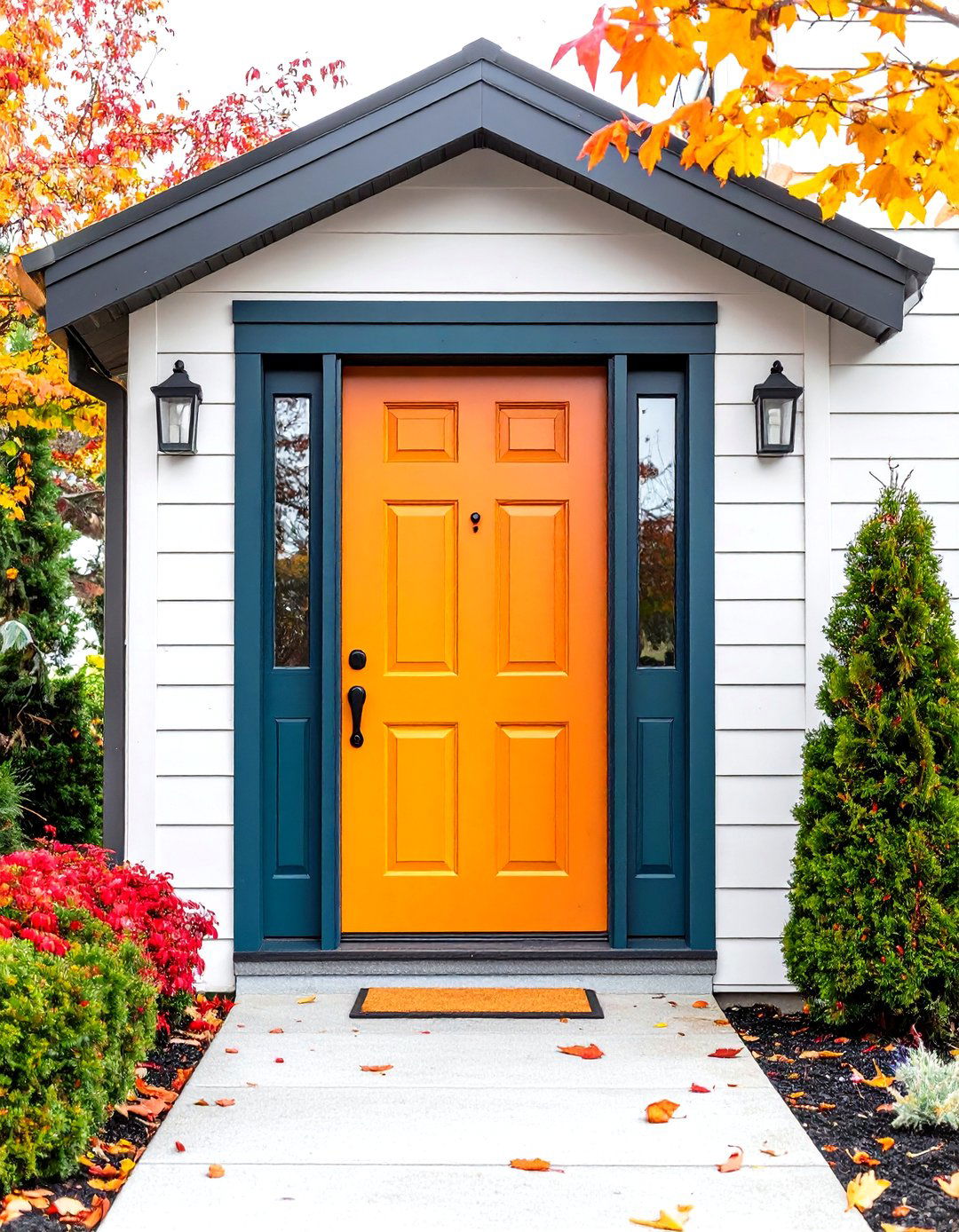
Unlike single-shade coats, a two-tone door sneaks personality inside and surprises outside. Paint the stiles and rails one saturated hue while leaving recessed panels lighter, or split the slab horizontally for a color-blocked effect. Tape the seam with premium painter’s tape, peeling it while paint is still tacky for razor-crisp lines. Keep both colors in the same temperature family—clay with terracotta, teal with navy—so the look feels intentional, not random, and instantly adds architecture to hollow-core doors.
3. Ombre Gradient Door

Consider an ombré door for gentle movement without pattern. Start with your deepest shade at the threshold and feather lighter tints upward to elongate narrow entries and camouflage scuffs near the floor. Blend colors while wet using a clean, dry brush to avoid visible bands. Stick to three steps in one hue family—indigo to sky—or sunrise blends of blush into apricot. Seal with clear matte polyurethane so the transition stays cloud-like, and remove weather-strip before you begin to keep the fade uninterrupted.
4. Writable Chalkboard Door
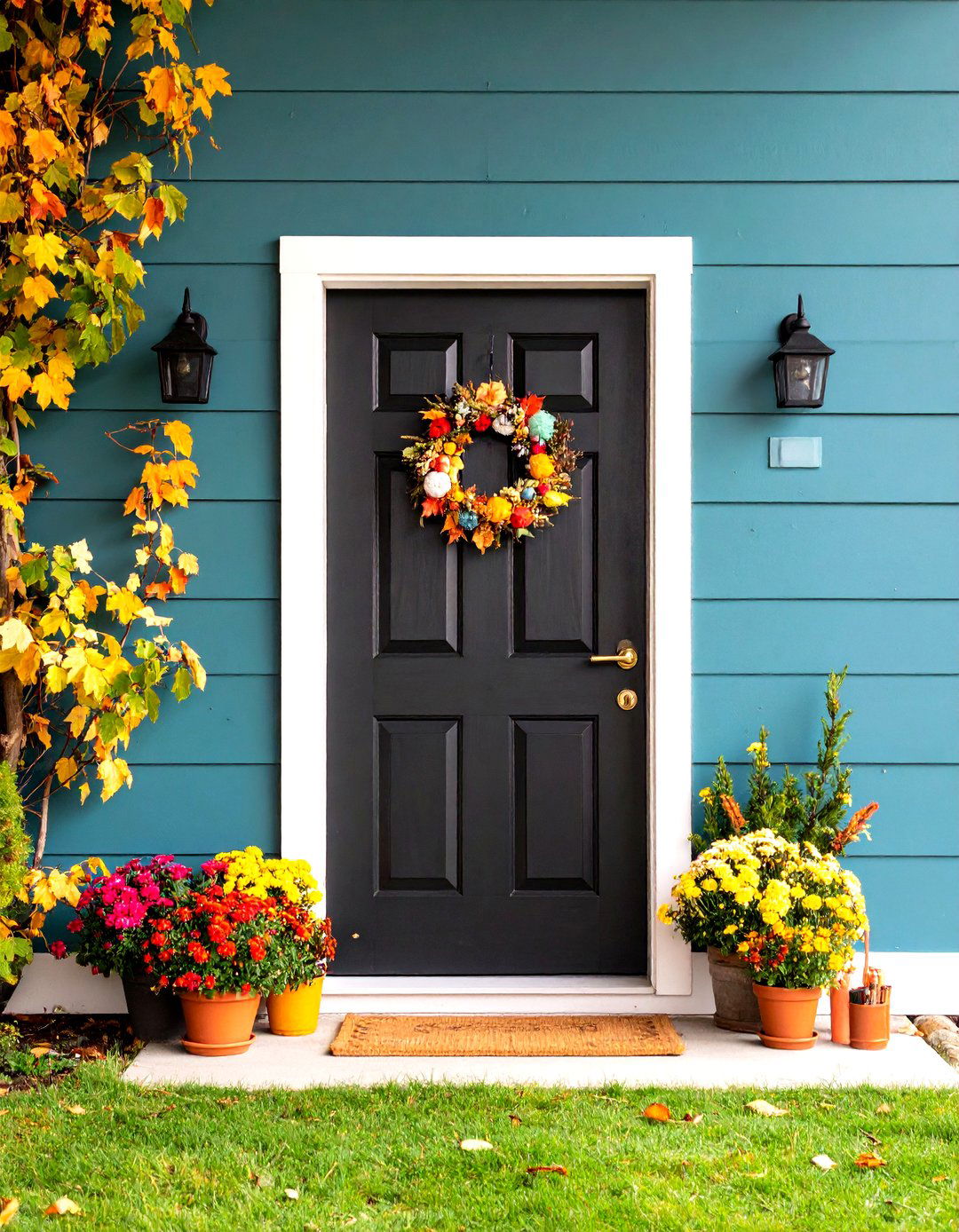
Taking notes on the run is effortless when the door doubles as a message board. Chalkboard paint bonds to wood, MDF, or metal; simply scuff-sand, prime if needed, and roll on two or three coats, letting each dry overnight. Season the surface by rubbing it with chalk and wiping clean—this prevents ghosting. Frame the panel in semi-gloss trim to contain the deep charcoal, and hang a chalk holder nearby. Families love it for weekly menus, while renters appreciate that chalkboard formulas are fully recoatable.
5. High-Gloss Lacquer Door
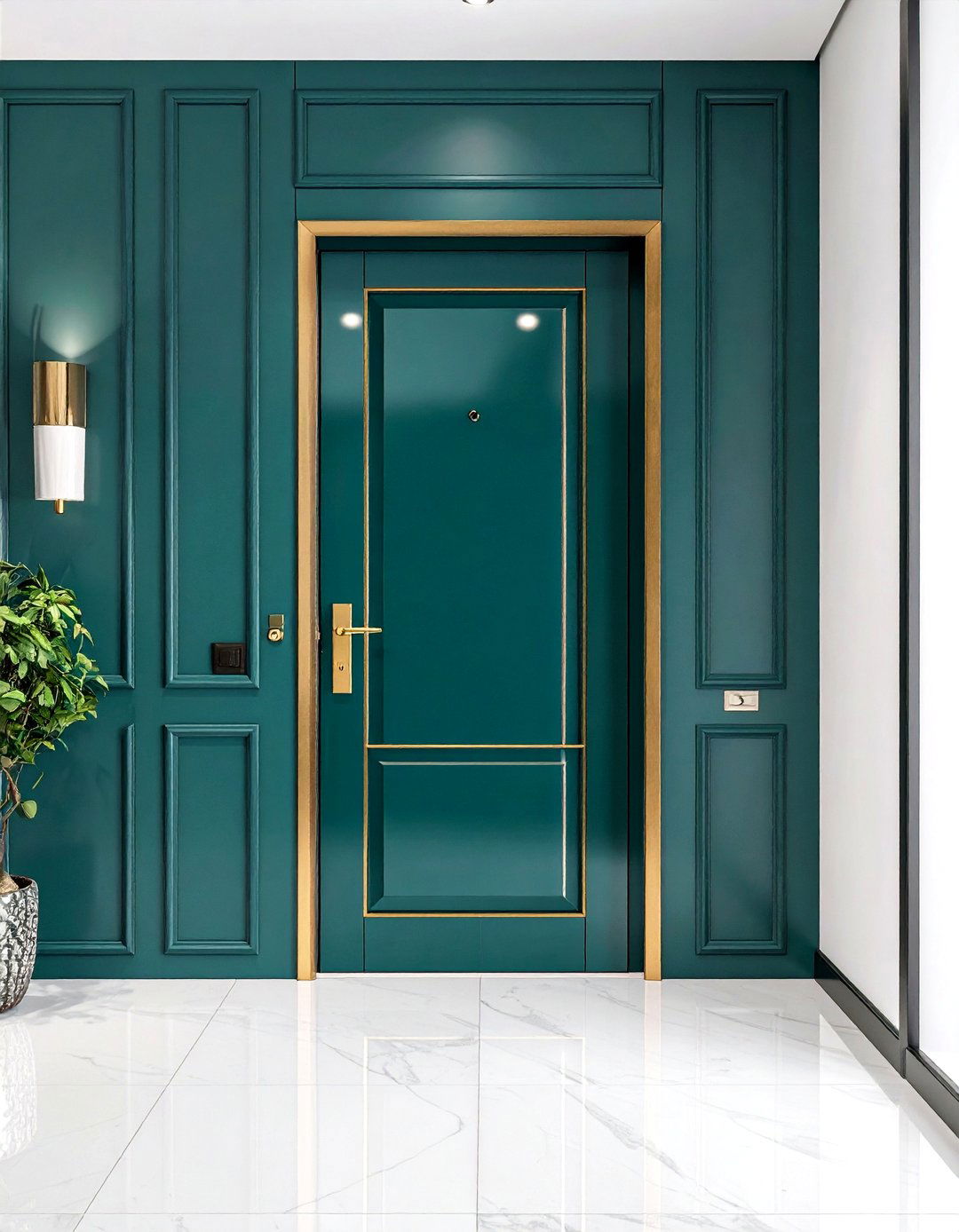
A high-gloss lacquer turns even a modest door into a mirror-like accent that bounces daylight down hallways. The once-retro finish is surging again for its “liquid color” glamour. Preparation is everything: fill dents, sand to 220-grit, and apply a high-build primer. Wet-sand between coats of alkyd gloss or sprayed lacquer, then polish with automotive compound. Jewel tones—emerald, oxblood, navy—look luxurious, while crisp white gloss feels futuristic. Understated lever handles keep reflections center stage.
6. Soft Pastel Door

A sugar-almond pastel door delivers friendliness without shouting—perfect for cottages or condos governed by color bylaws. Mint, lilac, and powder blue lighten heavy façades and photograph beautifully for listings. Choose gray-based pastels to avoid a candy-bright look and apply a satin sheen so the color doesn’t wash out in sun. Tint your primer a similar hue, then add aged-brass knockers for nostalgic charm.
7. Sleek Black Door
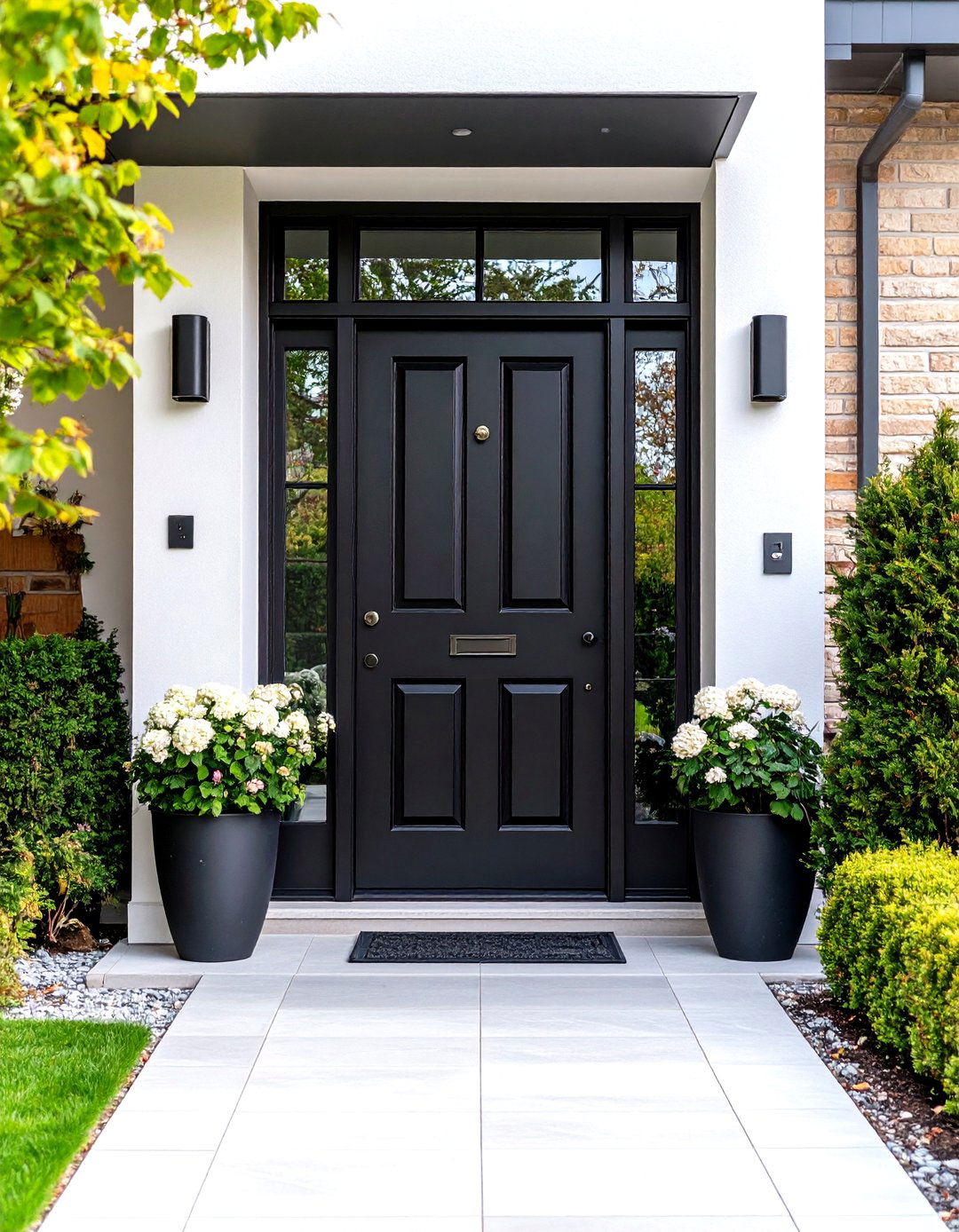
Stepping through a sleek black door feels like entering a boutique hotel—dramatic yet timeless. Black frames artwork and staircases beyond, creating crisp contrast against light walls and floors. Select an eggshell or satin formula to resist fingerprints while absorbing light gracefully. Keep the door leaf black if walls are white; when paneling is darker, wrap casing in the same color for an enveloping effect. UV-blocking topcoat prevents chalking on sun-drenched façades.
8. Metallic Satin Door
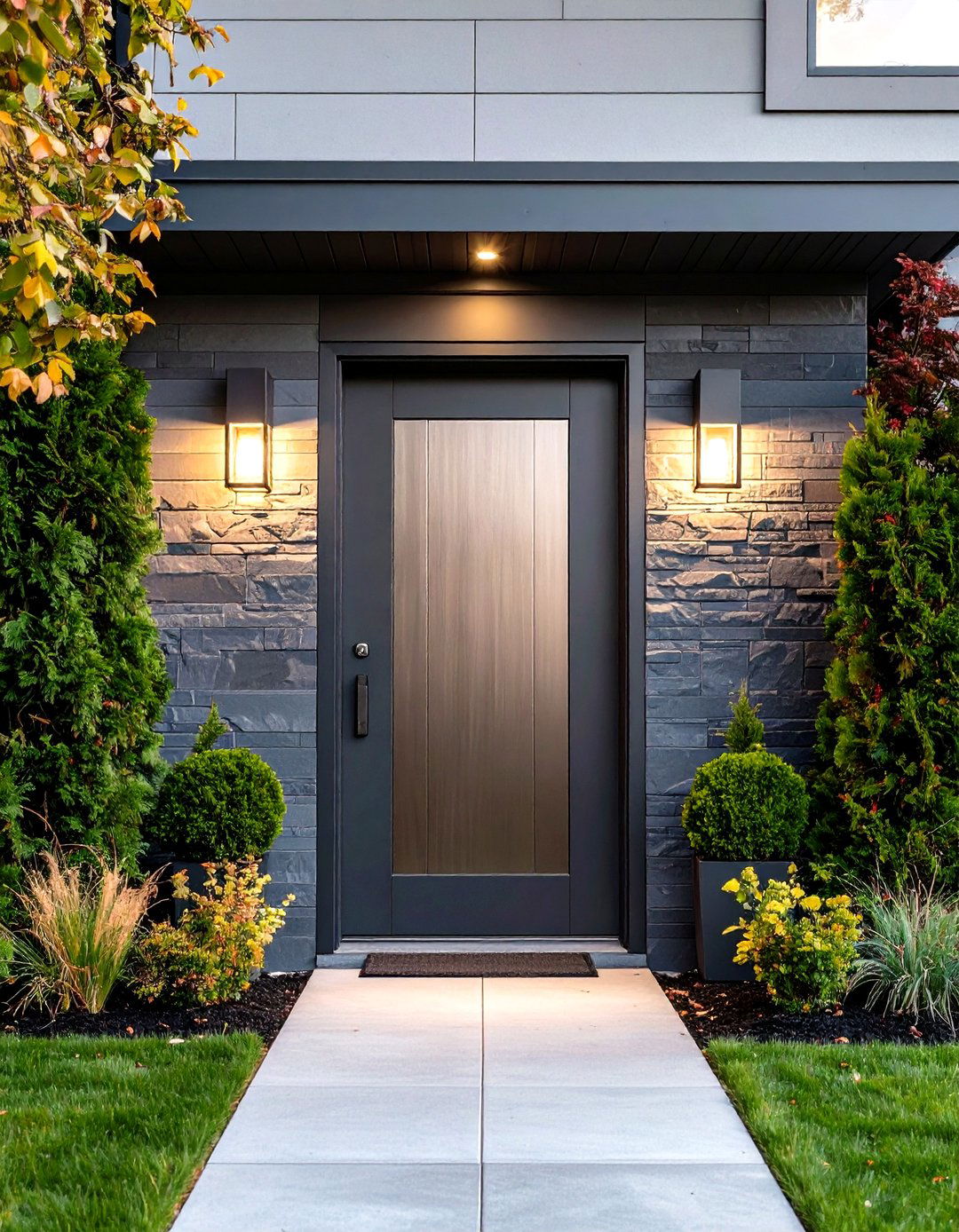
Modern satin metallic paints lay down mica particles for a brushed-steel or soft-copper glow that catches evening lantern light. Start with a tinted base matching your metallic tone to hide brush strokes, then roll paint in one direction and back-brush lightly. Finish with clear exterior urethane for durability, and stick to neutral siding so the shimmer reads chic, not gaudy.
9. Stenciled Mosaic Door
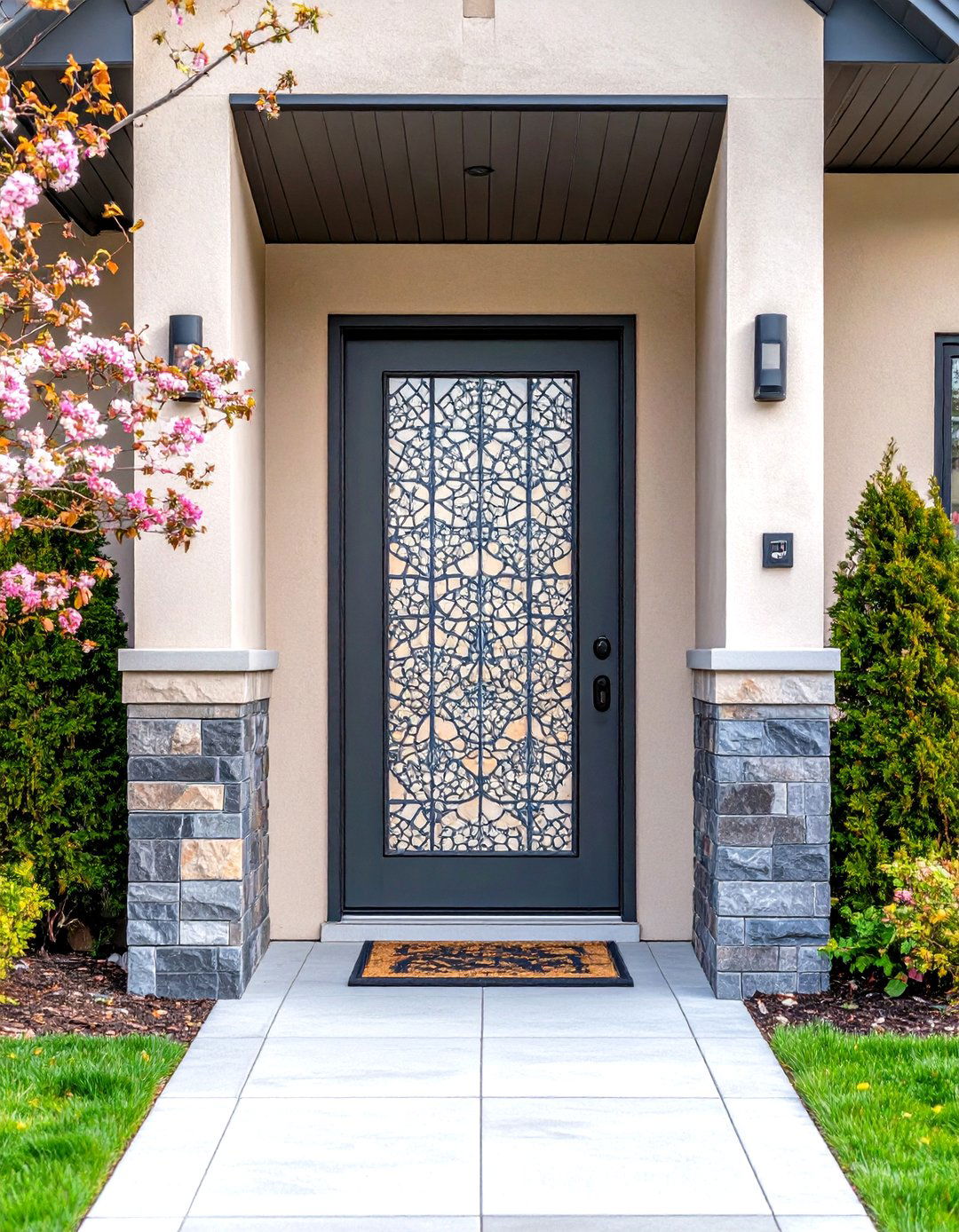
Stenciling turns a plain door into a bespoke mosaic without tile weight. Choose a repeating medallion that echoes nearby glass or flooring and secure the stencil with spray adhesive to prevent bleed-through. Roll on minimal paint, off-loading excess first; two light passes beat one heavy coat. Seal with water-based polyurethane so the lines stay crisp, making this a budget-friendly upgrade for fiberglass or hollow-core models.
10. Warm Neutral Door

Neutral is anything but dull in 2025, where warm grays, taupes, and mushroom hues ground façades and let landscaping pop. Use low-sheen acrylic for subtle elegance and superior coverage over dark colors. Glaze recesses slightly darker to highlight panels, then accessorize with brushed gold or oil-rubbed bronze hardware. The sophisticated restraint boosts resale value by appealing to broad tastes.
11. Distressed Farmhouse Door
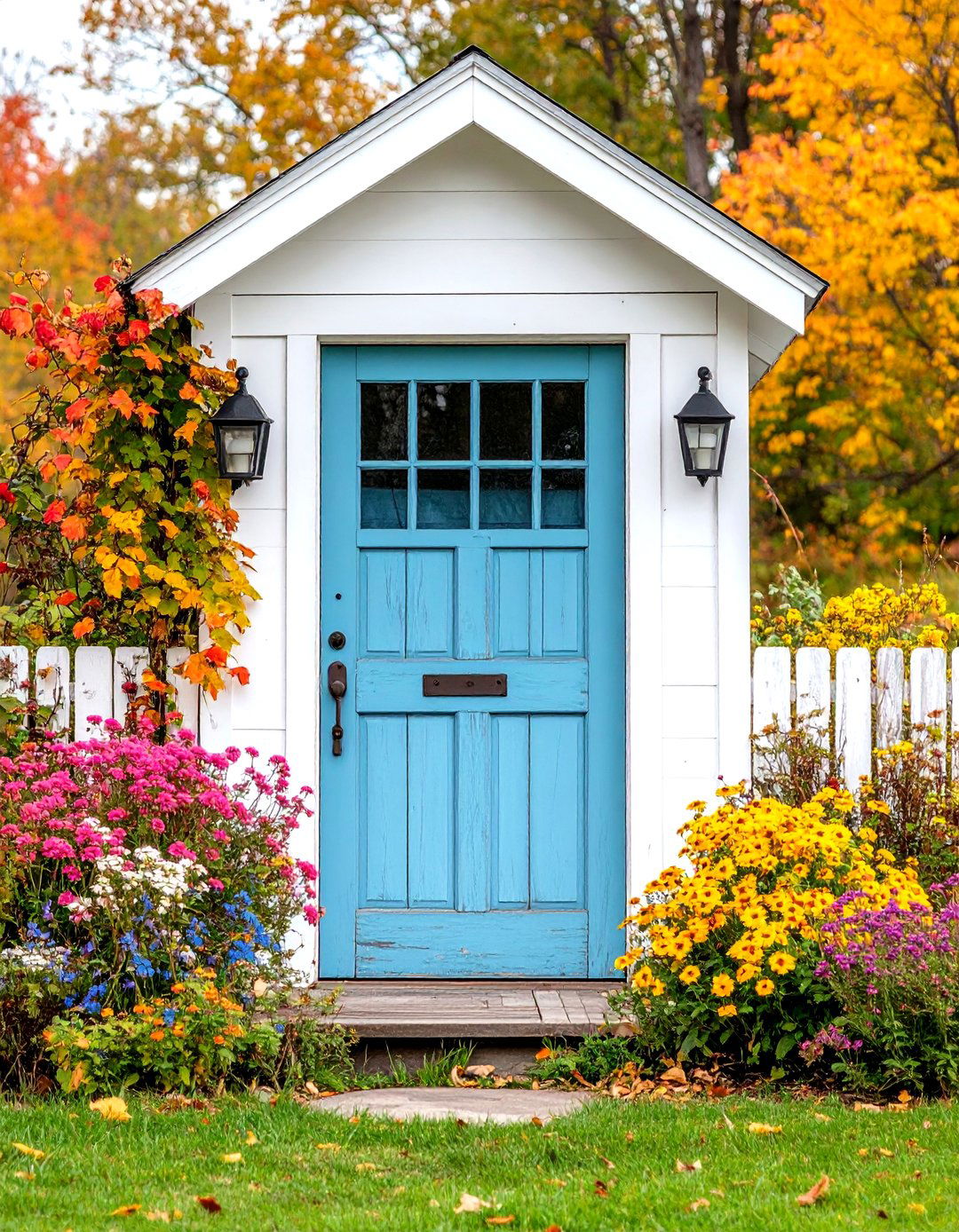
A gently distressed farmhouse door conveys history even in new builds. Milk paint’s chalky surface can be sanded or chipped to expose wood beneath for authentic wear. Apply two contrasting layers—creamy white over slate—then rub edges with 220-grit paper. Seal with hemp oil for protection without shine, add strap hinges, and let natural scuffs enhance the relaxed vibe.
12. Geometric Statement Door
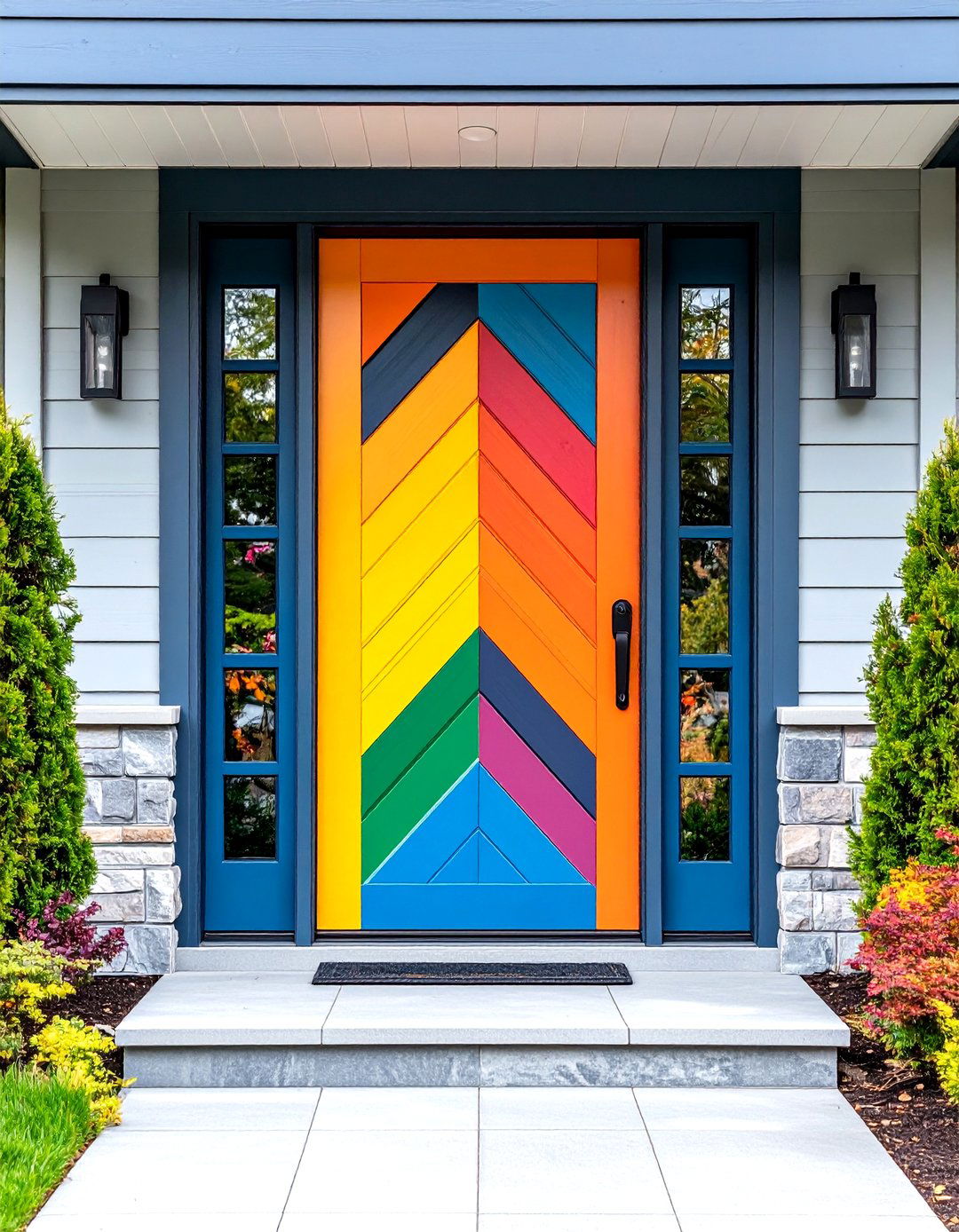
Geometric color blocking adds art-house personality to a flat slab. Mask triangles, chevrons, or random facets with painter’s tape, pressing edges with a putty knife for razor lines. Limit the palette to three colors and finish with a satin clear coat for easy cleaning. Because the design is fully reversible, renters can indulge without fear—prime and start fresh whenever trends shift.
13. Playful Striped Door

Horizontal stripes nod to cabana style and visually widen narrow corridors. Use a laser level to tape perfectly parallel lines; even a two-millimeter wobble shows. Alternate one vivid hue with near-white for punch, or keep things subtle with two mid-strength neutrals. Paint the thin door edge, too, so the pattern stays consistent when the door is ajar.
14. Custom Mural Door

A door makes a ready-made canvas for family stories. Prime, chalk-sketch your scene, fill in with thinned acrylics, and seal with UV-blocking varnish. Themes range from vines that climb onto porch planters to comic clouds bearing kids’ names. If freehand drawing feels daunting, project an outline or use peel-and-stick transfers before adding paint.
15. Sage Green Serenity Door
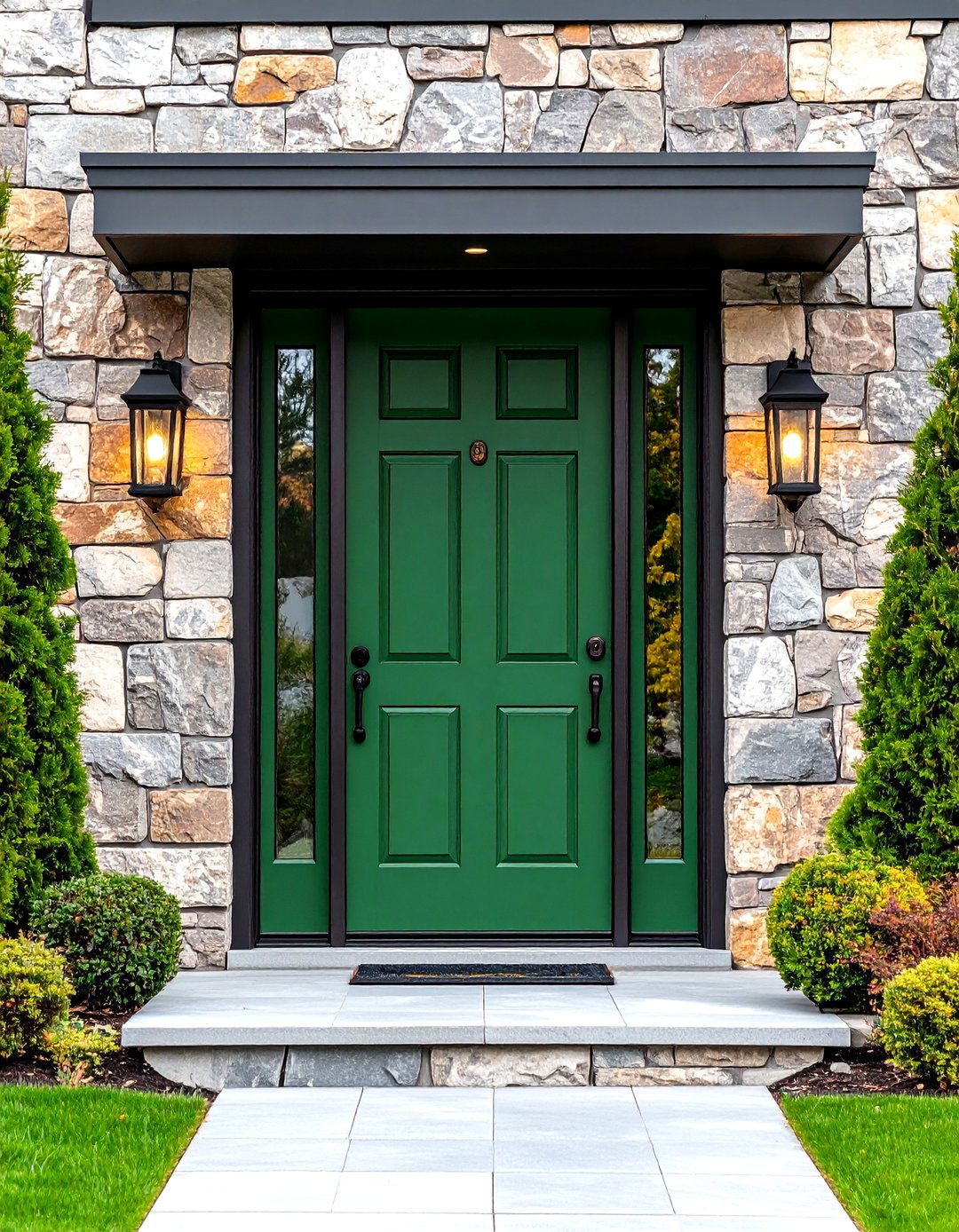
Soft sage green offers nature’s calm paired with urban sophistication and ranks among 2025’s most requested shades. Its gray undertone flatters limestone, brick, and cream siding; matte-black fixtures sharpen the look. Use warm-white LED sconces if the entry lacks daylight so the hue stays fresh until dusk.
16. Nautical Navy Door
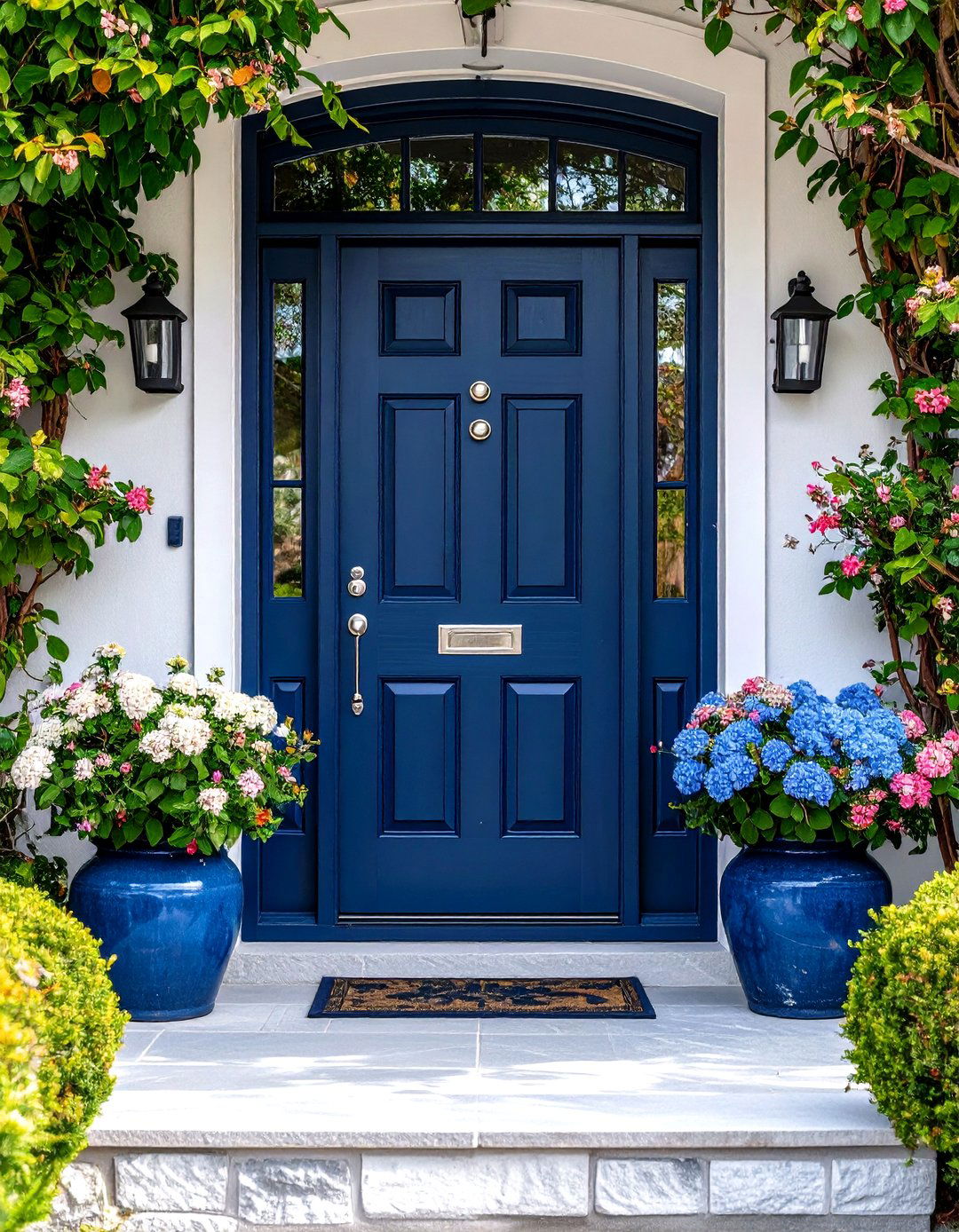
Classic navy is the little black dress of doors—perennially chic and adaptable. Deep blues top homeowner wish lists for providing contrast without glare. Prime with gray-tinted sealer to avoid a white halo, accent with polished nickel hardware, and finish with UV-protective clear coat where sun exposure is intense.
17. Sunny Yellow Door
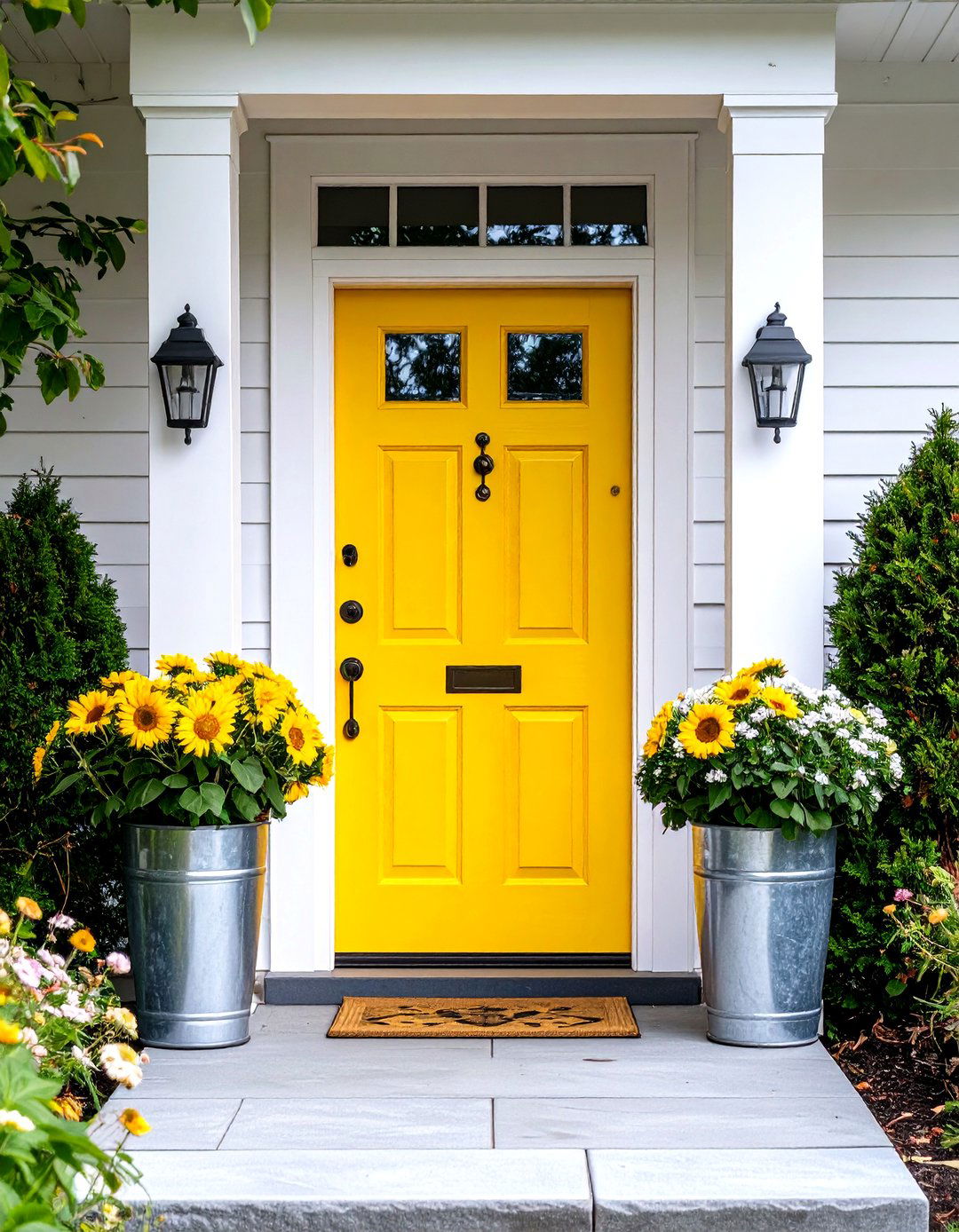
Few colors broadcast joy like sunflower yellow. Vibrant yellows exude optimism and sparkle against charcoal or navy siding. Select high-hiding exterior acrylic; if brightness scares you, shift to mustard-gold that glows in sun yet mellows in shade. Balance the exuberance with crisp white trim and silver-leaf planters.
18. Terracotta Warmth Door
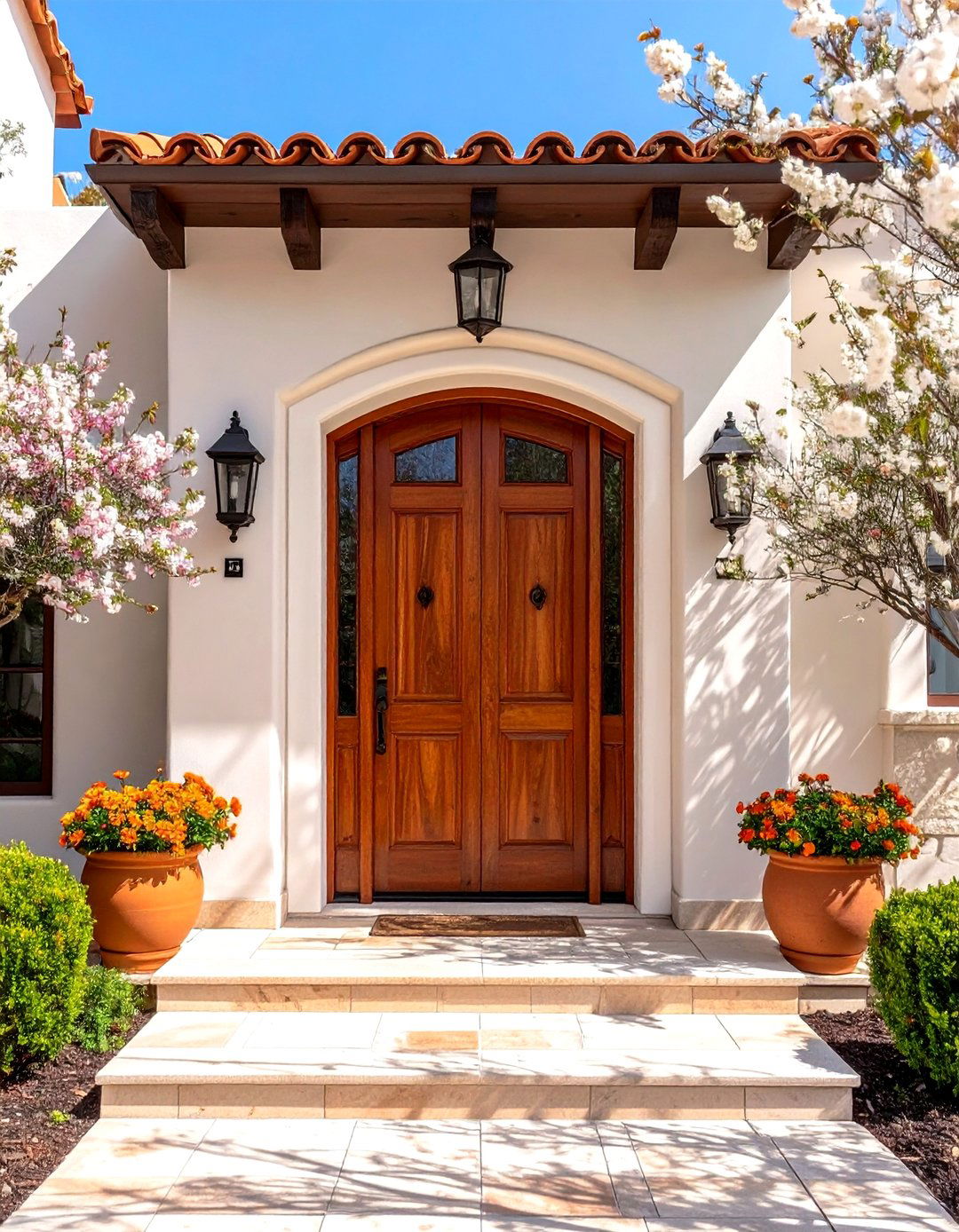
Clay-rich terracotta marries Mediterranean warmth with eco-centric palettes. The hue harmonizes with green landscaping and features prominently in curb-appeal reports. Brush a translucent brown glaze into grooves for kiln-fired depth and seal with matte topcoat. Oil-rubbed bronze hardware and woven wreaths complete the sun-baked character.
19. Color-Drenched Monochrome Door
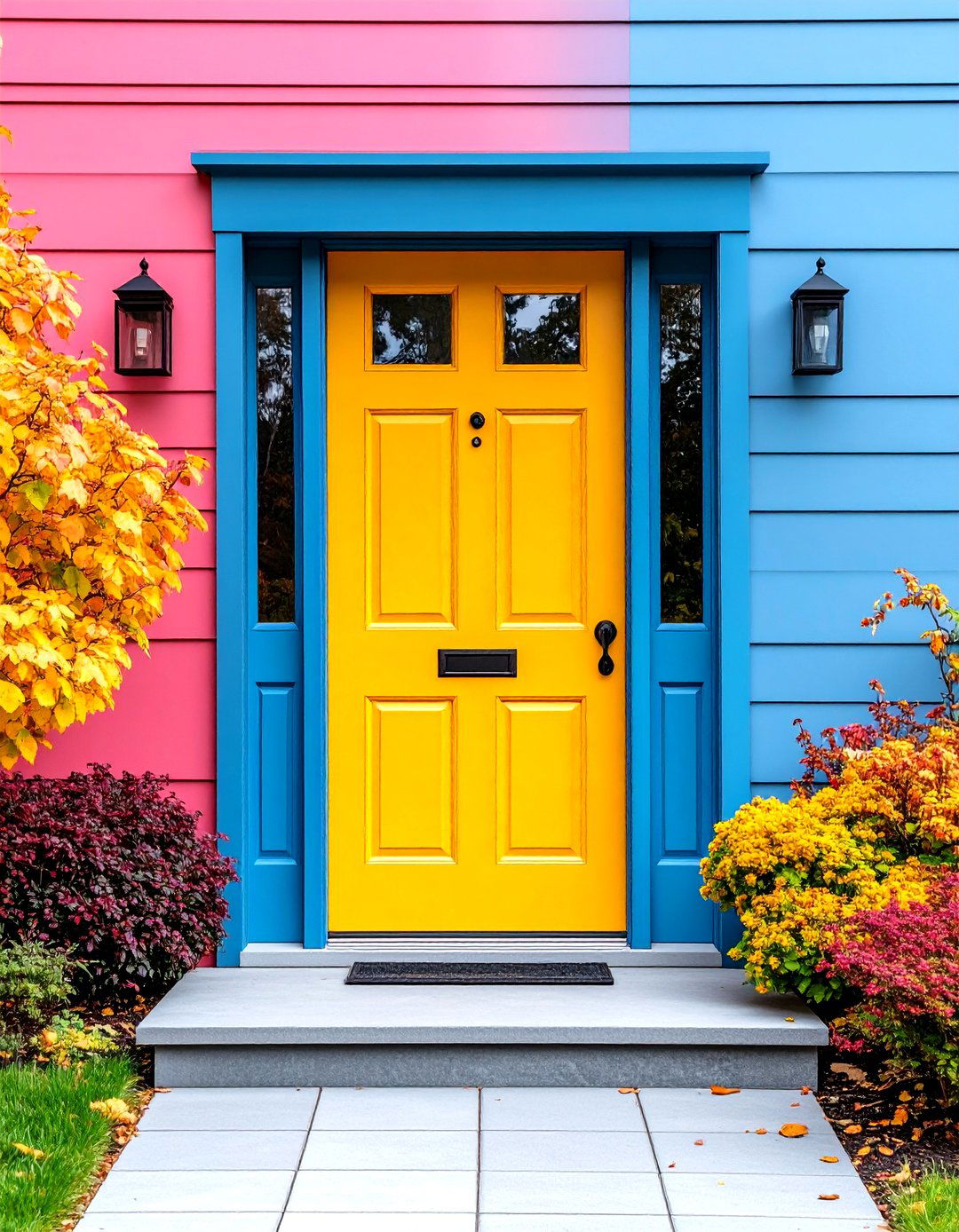
Color-drenching—painting walls, trims, and the door the same hue—creates an enveloping cocoon that can visually expand small rooms. Use matte on walls, satin on the door, and semi-gloss on skirting so sheen shifts add subtle depth. Caulk every gap before painting; monochrome schemes highlight imperfections.
20. Seasonal Swap Door

Commitment-phobes can adopt a seasonal-swap strategy: neutral base coat plus changeable elements such as magnetic signs, peel-and-stick decals, and wreaths refreshed each quarter. Keep a touch-up pot nearby for quick fixes, and try removable vinyl panels pre-cut to door size for color changes that peel away cleanly when trends evolve.
Conclusion:
Whether you crave high-gloss glamour, farmhouse patina, or the serenity of sage, painting a door remains the quickest, most affordable way to reshape the greeting your home extends to the world. With careful prep and fearless color, a single afternoon’s brushwork can deliver seasons of renewed mood and unmistakable personality.


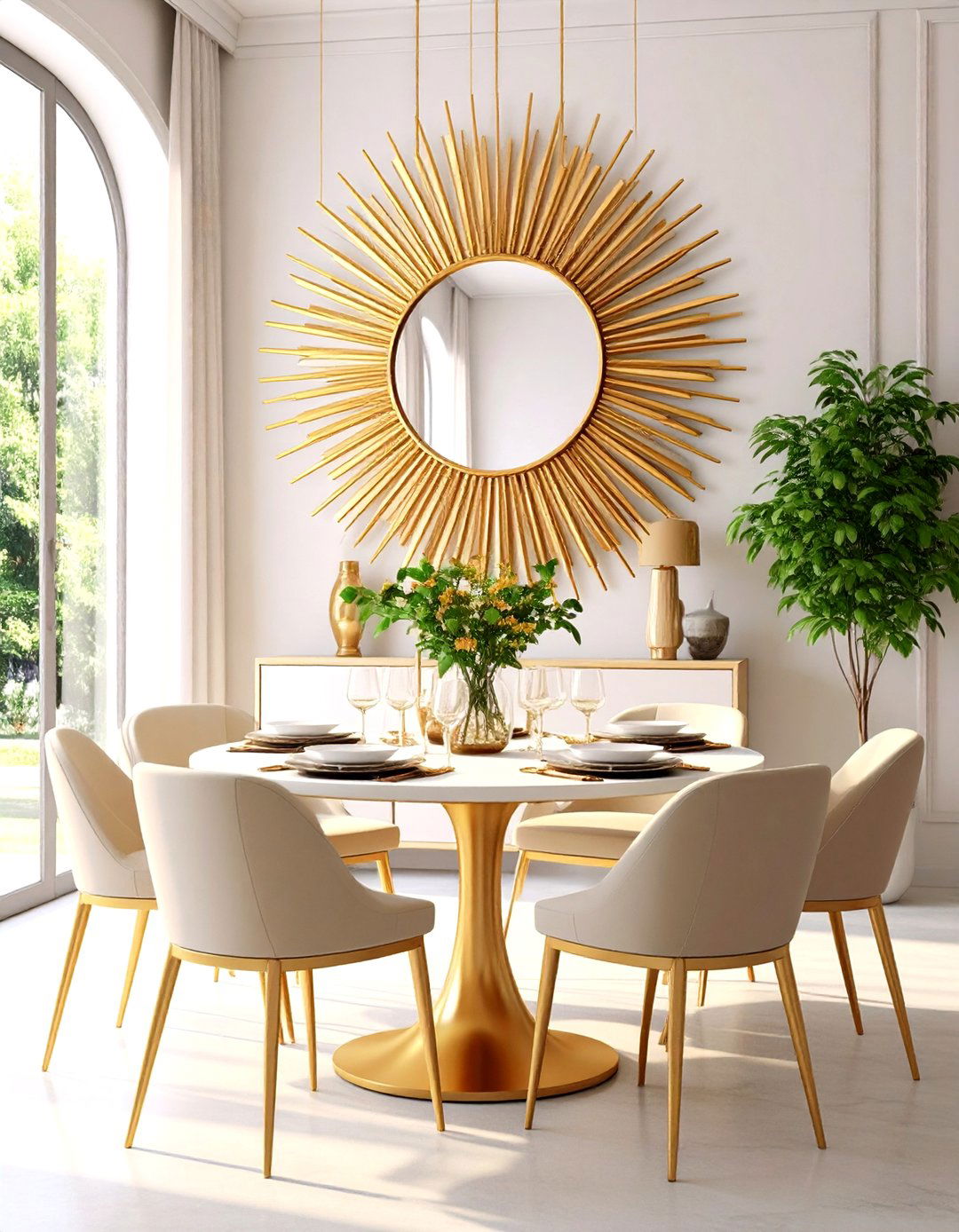
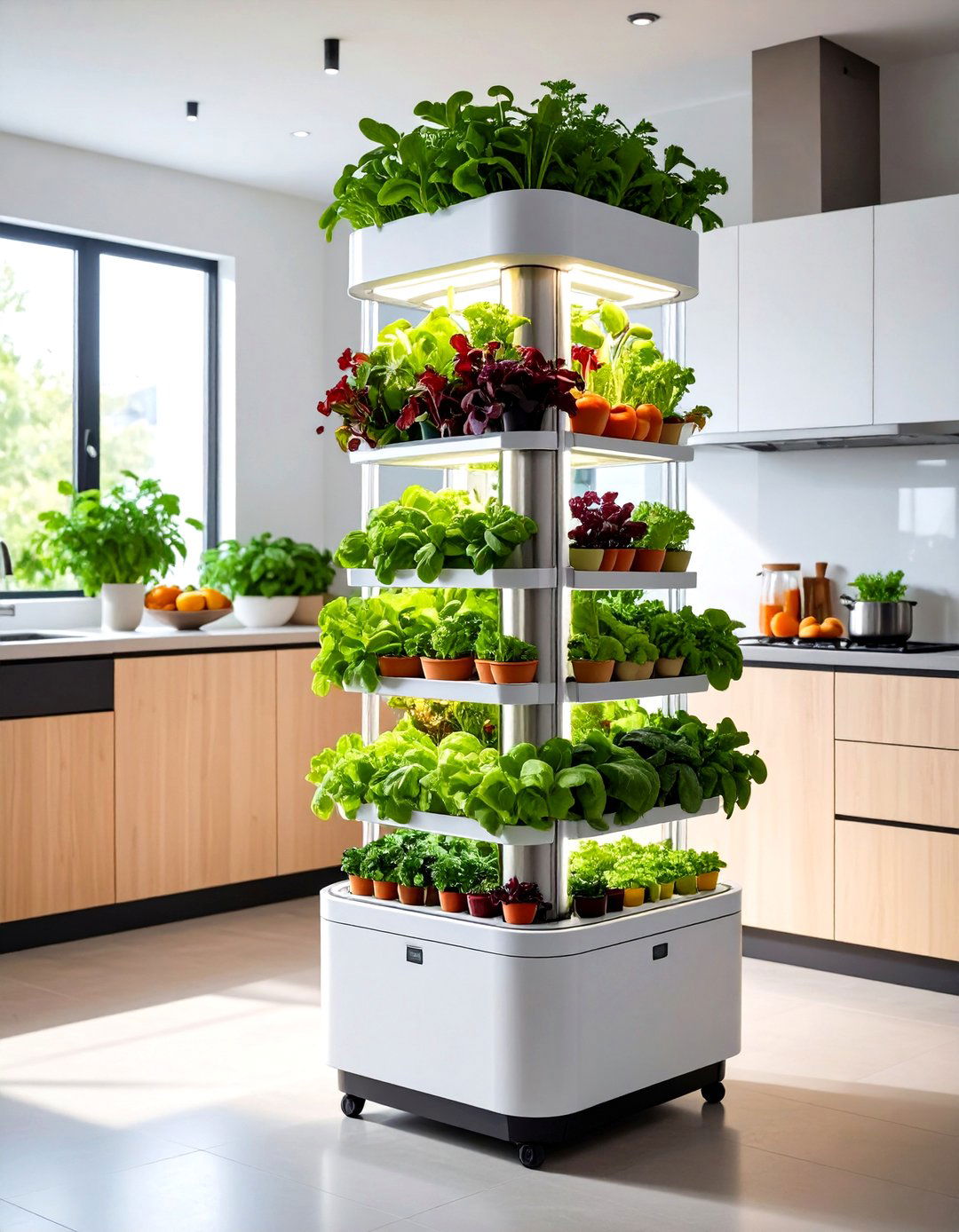
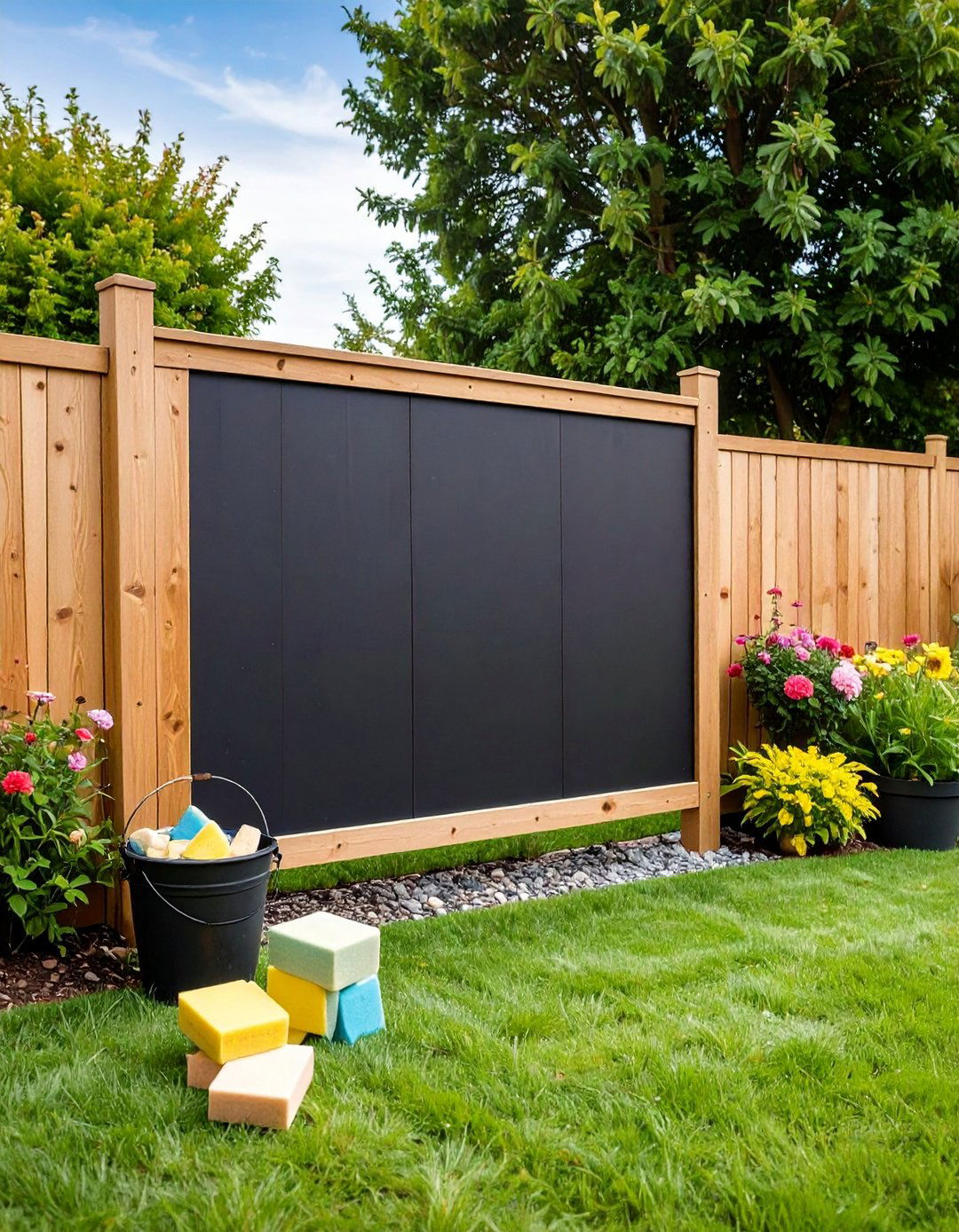
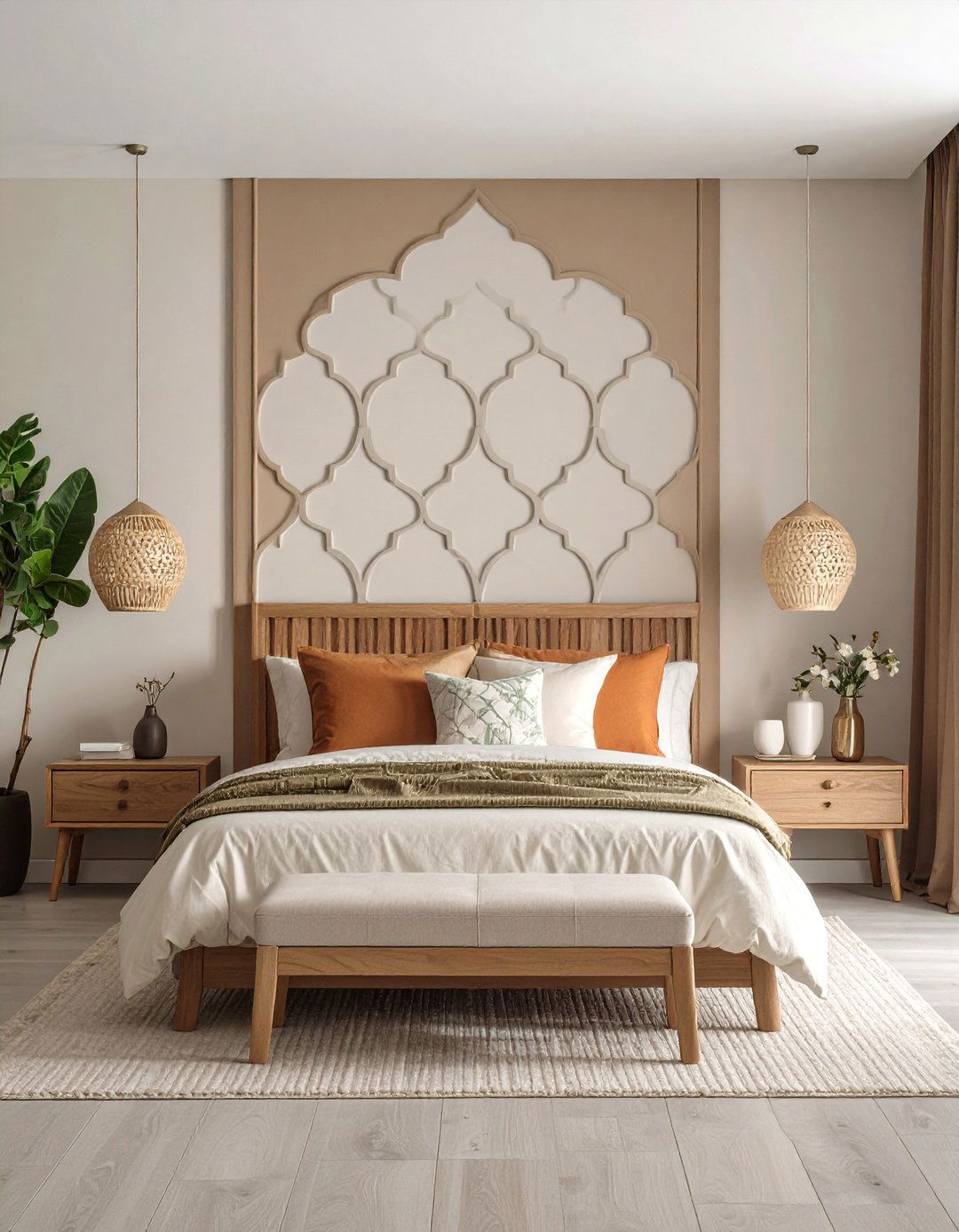
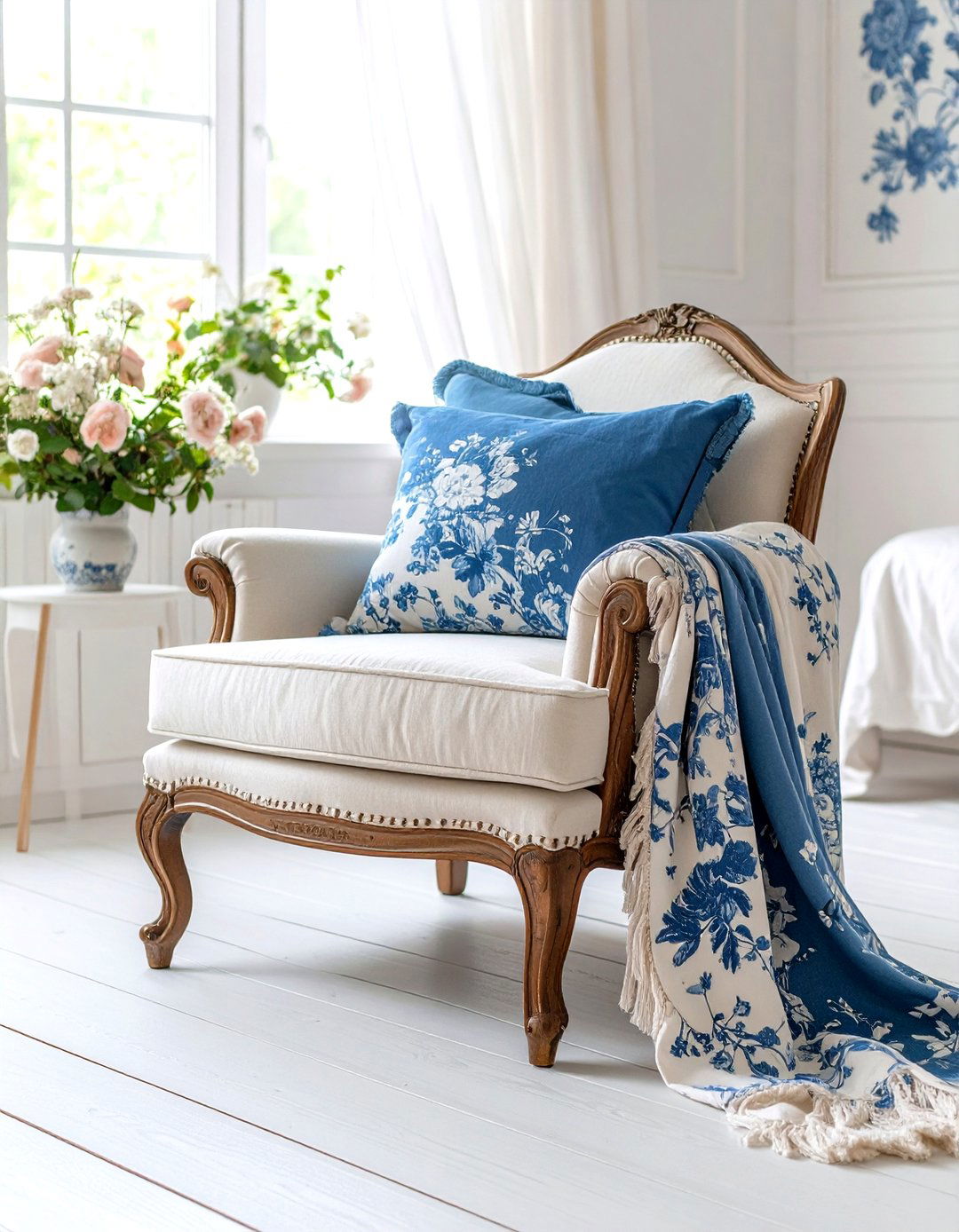
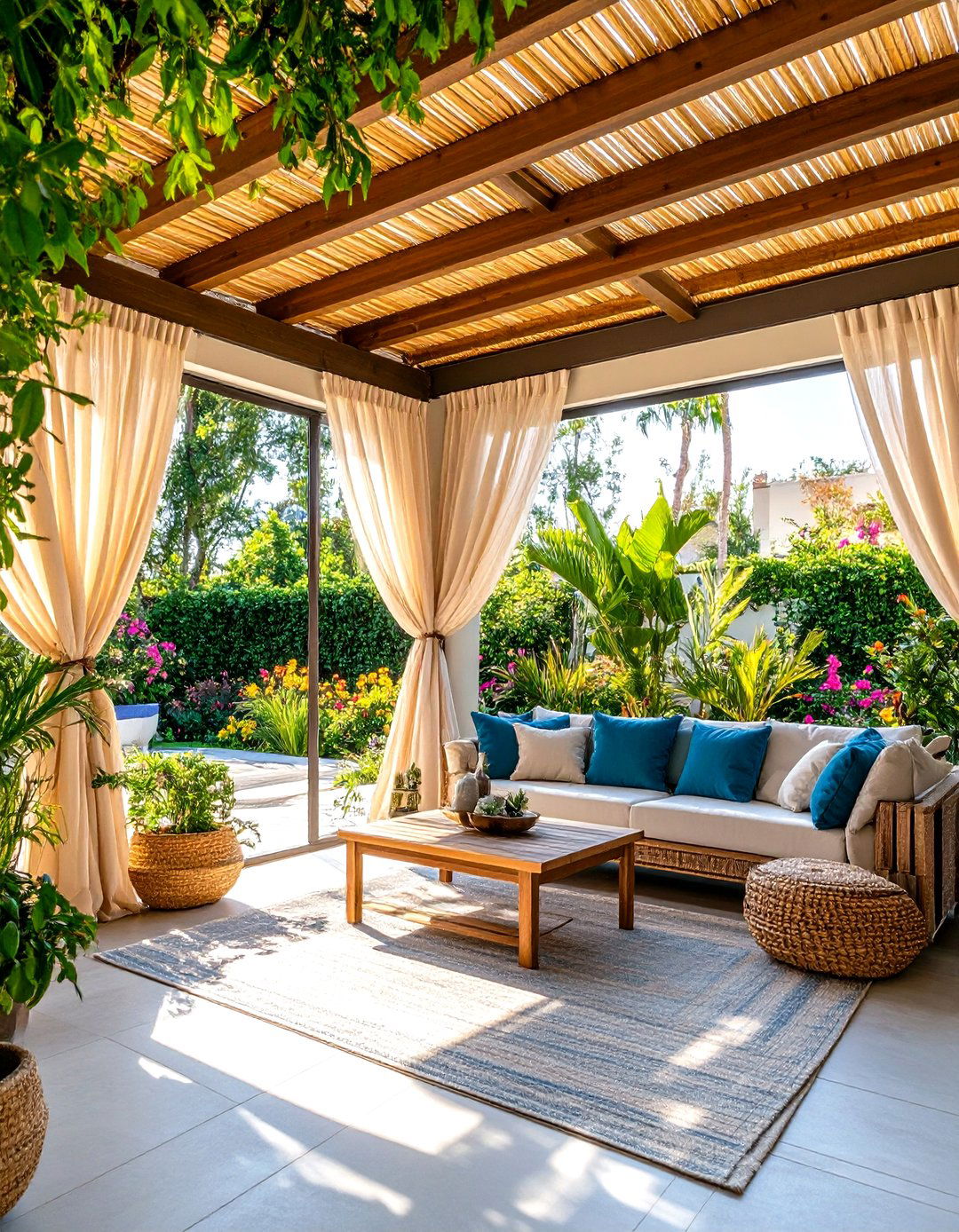


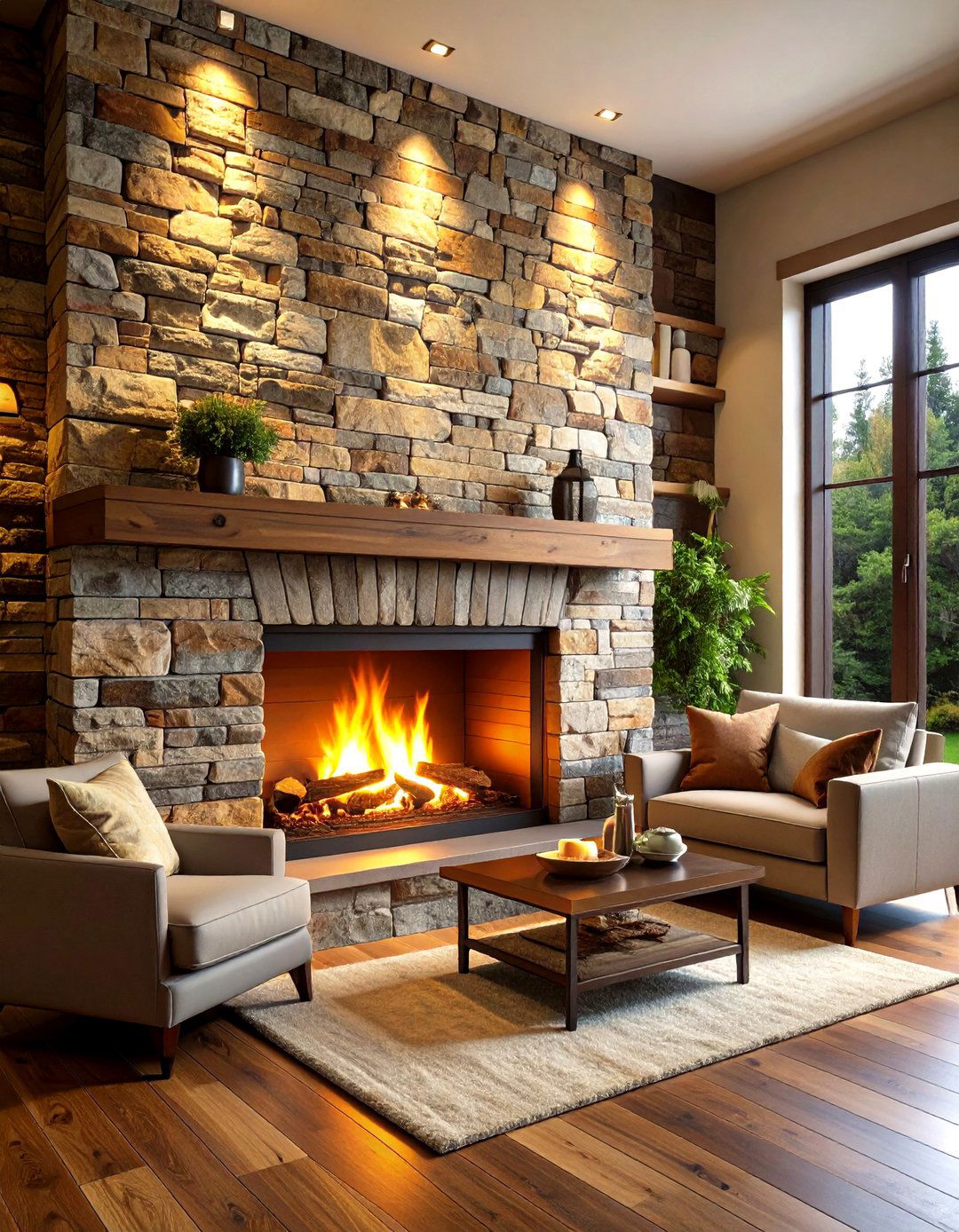
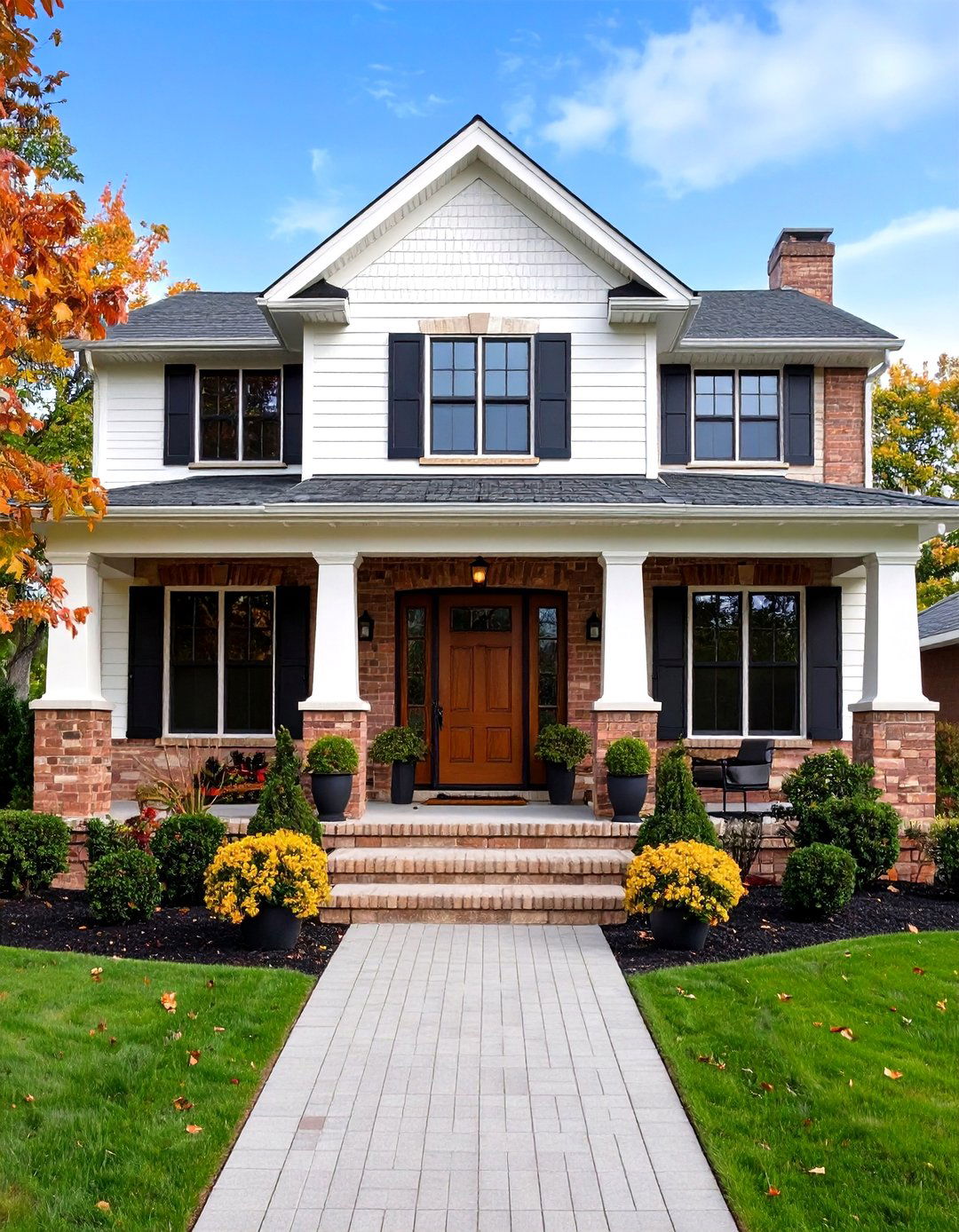
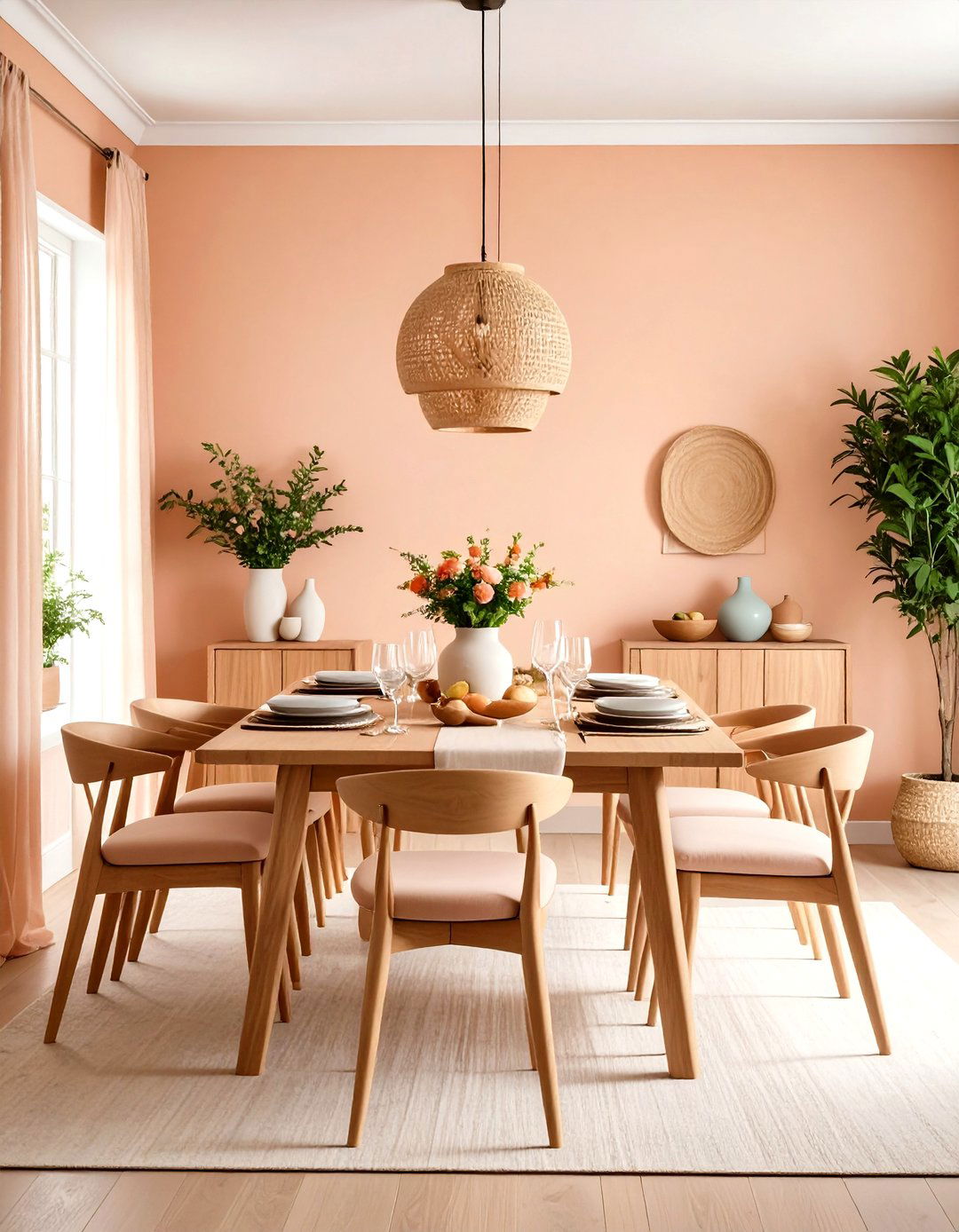
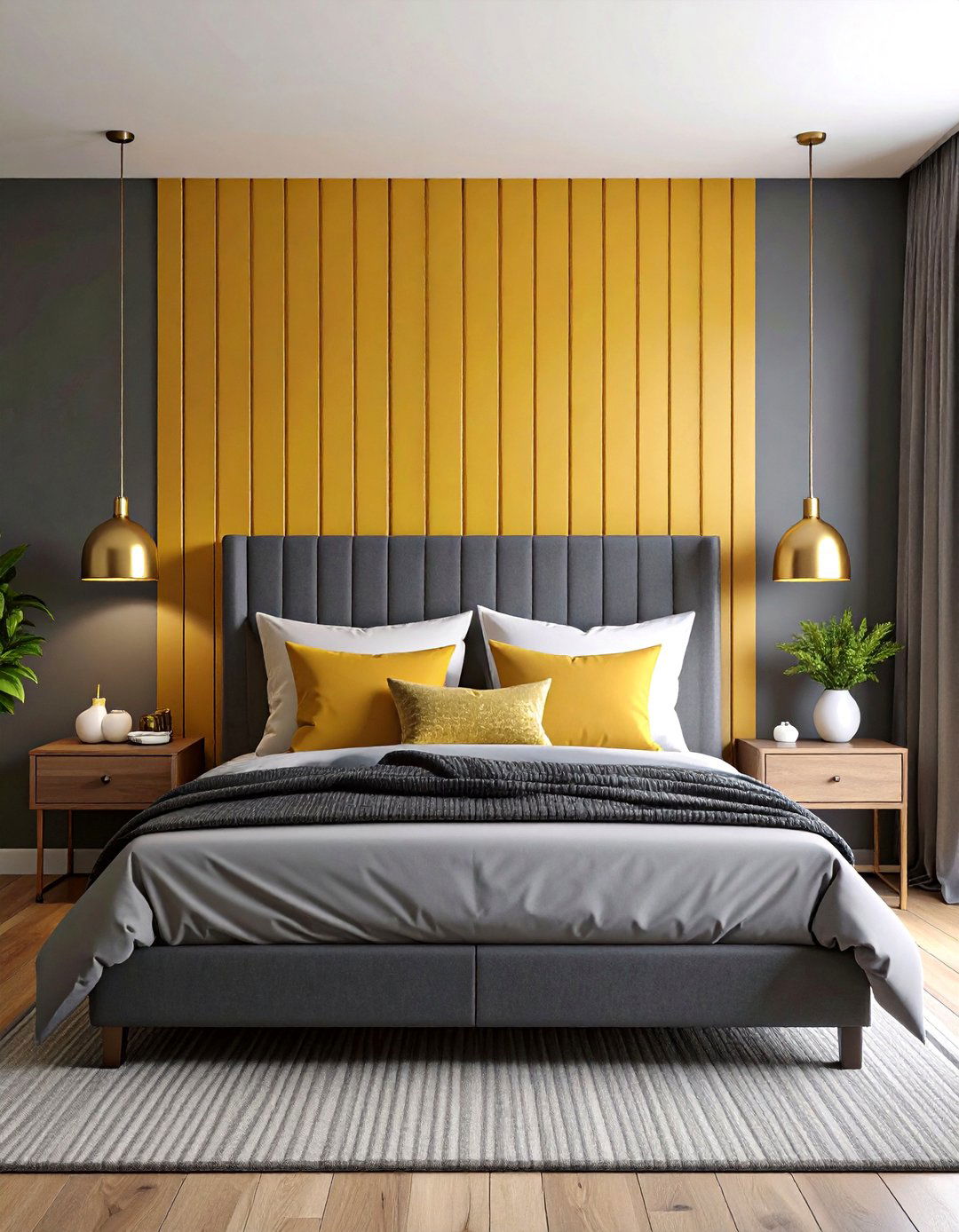
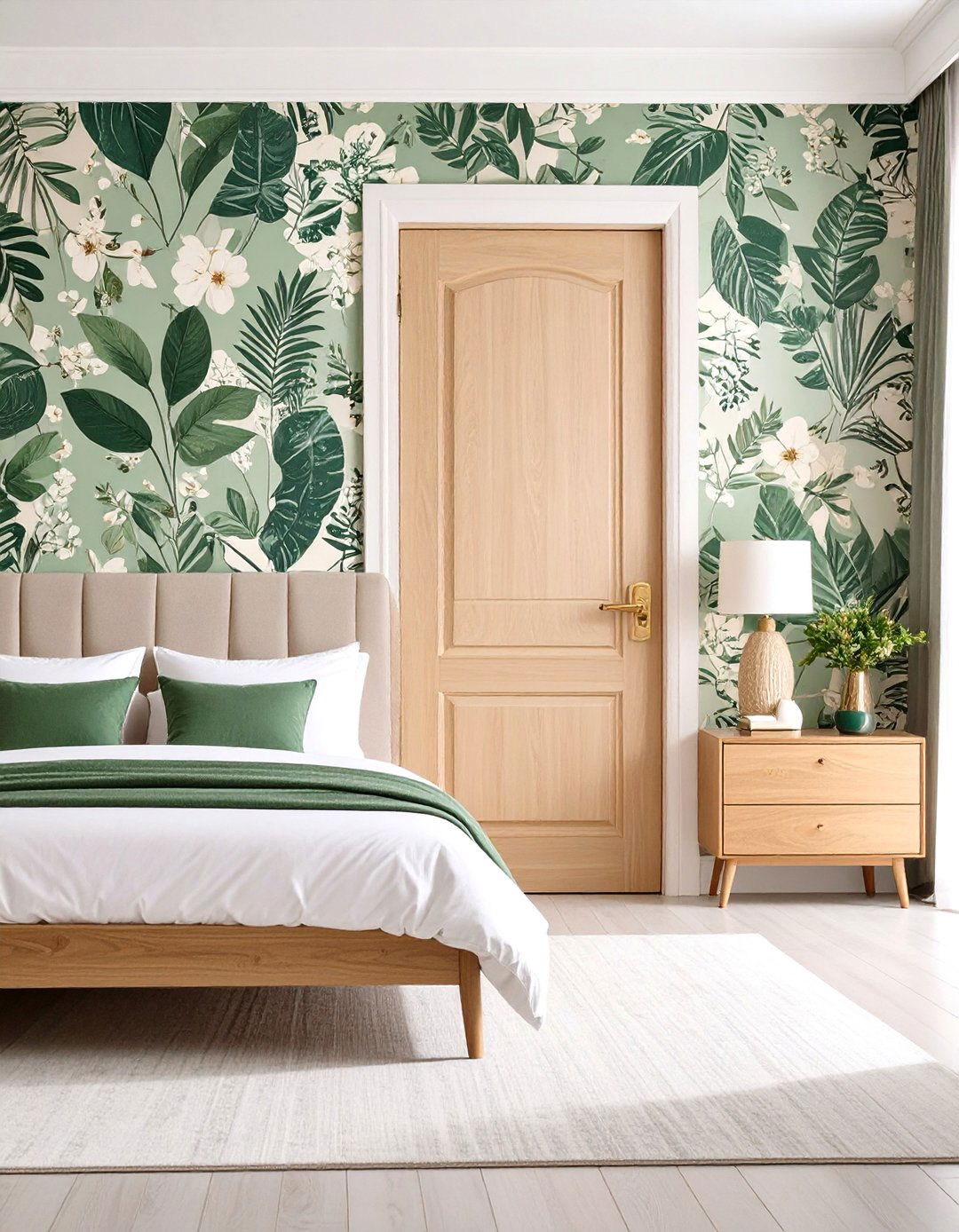
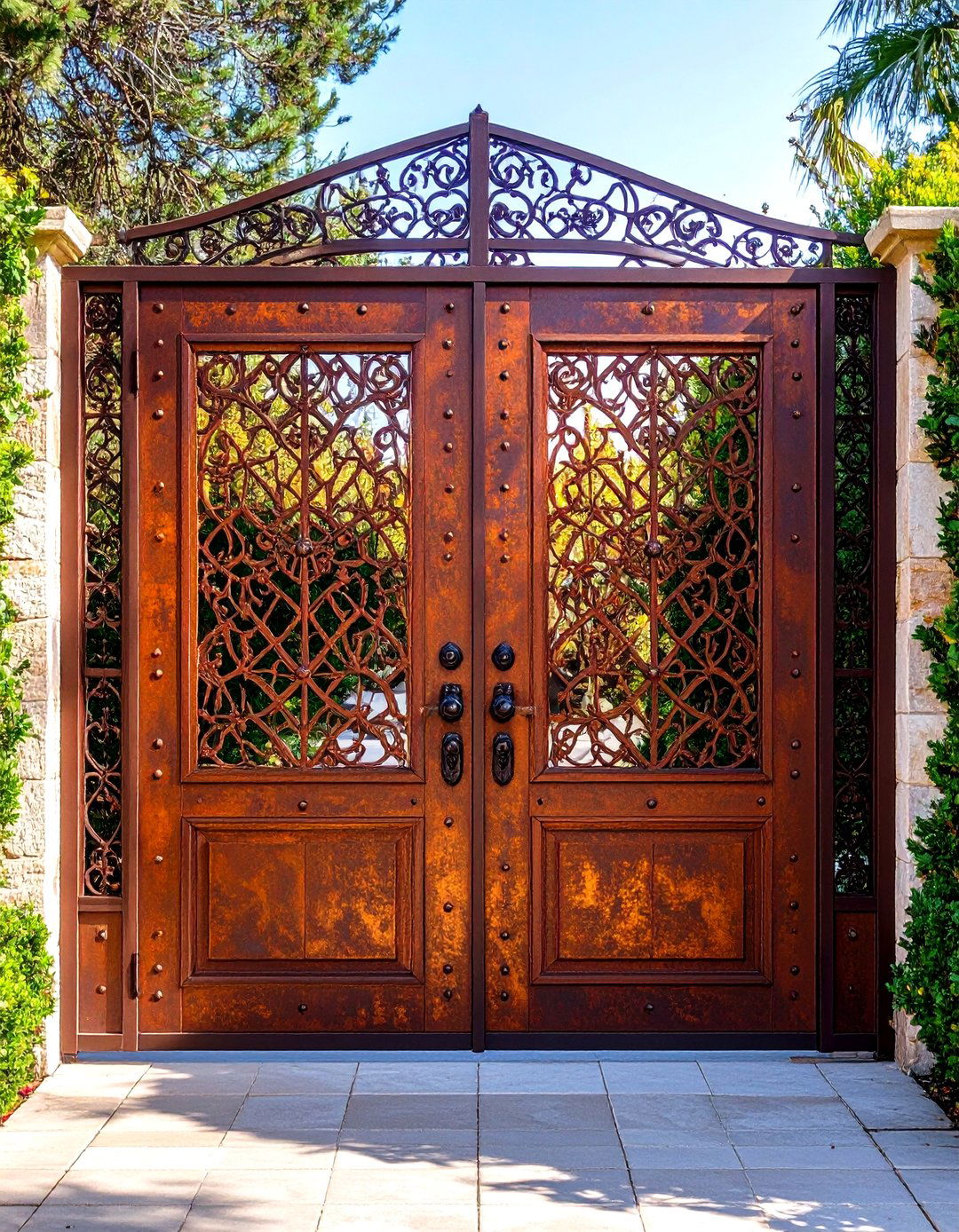

Leave a Reply